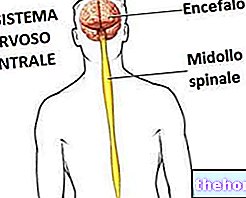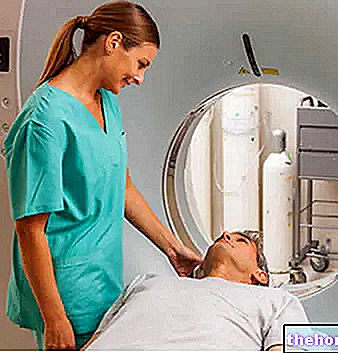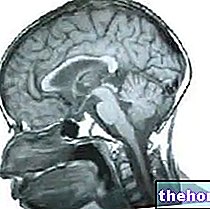Cerebellar ataxia: definition
Cerebellar ataxias represent a heterogeneous group of diseases that identify precise cerebellar syndromes: the cerebellar forms, like all ataxias, frame neurodegenerative disorders, responsible not only for the progressive motor uncoordination of the lower and upper limbs, but also for involuntary ocular wave movements (oculomotor defects) and difficulties in speech articulation (dysarthria). Cerebellar ataxias are transmitted genetically, in an autosomal-dominant, autosomal-recessive, or X-linked manner; they are classified according to the mutated gene, the chromosomal locus affected or again, based on the genetic mode of transmission of the ataxic syndrome.
Incidence
Medical statistics report interesting data on the "incidence of" cerebellar ataxia. Distinguishing the forms with dominant transmission from those of the recessive type, the latter seem to be much more frequent; in fact, autosomal-dominant cerebellar ataxia affects 0.8-3.5 subjects per 100,000 healthy individuals, while cerebellar ataxia with autosomal-recessive transmission occurs in about 7 cases per 100,000. Another difference between the two forms of genetic transmission is the moment of onset of the disease: the autosomal-dominant forms tend to present late, around 30-50 or even 60 years. Cerebellar ataxias with autosomal-recessive transmission tend instead to begin around 20 years of age.
Symptoms
The disease begins with walking and postural deficits, and with difficulty in coordinating joint movements; subsequently, cerebellar ataxia evolves in a negative sense, causing serious damage to the eye, such as optic atrophy, nystagmus, pupil abnormalities, retinitis pigmentosa (it begins first with the reduction of vision, and then creates night blindness in the forms of severity) and ophthalmoplegia (paralysis of the musculature of the eyeball). Other symptoms that can be found include: hypoplasia of the cerebellum, hyporeflexia, asthma, emphysema, muscle spasticity, diabetes, speech deficit and behavioral disorders. [taken from www.atassia.it /]
However, these symptoms do not always occur in all patients with cerebellar ataxia; in some cases, in fact, ocular disorders are absent, in others the degenerative damage involves only the cerebellum, in still others the lesions can affect the retina, the optic nerve, the basal ganglia, the cerebellum, etc. The symptomatological picture can sometimes be confused with Friedreich's ataxia; for this very reason, the diagnosis must be correct and careful.
Causes
The causes of the transmission of cerebellar ataxia lie in genetics and in the mutation of genes:
- Instability of the expanded alleles, which causes the early onset of cerebellar ataxia;
- Abnormal expansion of repeated nucleotide triplets (especially for forms with autosomal-dominant inheritance);
- Mutation related to aprataxin or frataxin.
A certain correlation has also been observed between cerebellar ataxia and vitamin E deficiency. Some forms of cerebellar ataxia are also associated with hypogonadotropic hypogonadism, celiac disease, neoplasms, inflammatory and vascular lesions affecting the cerebellum.
Diagnosis and treatment
The neurological examination is certainly the most effective diagnostic option for identifying the symptoms of cerebellar ataxia; the neurological test must also be accompanied by an MRI of the brain. Blood tests are also recommended, in order to ascertain the hereditary form. Molecular tests are useful for recognizing the mutated gene.
Unfortunately, although scientific research has made great strides in the molecular field, the therapy aimed at fighting cerebellar ataxia has not yet been identified. However, there are palliative therapies, able to dampen the symptoms: physiotherapy helps, in fact , to relieve pain and improve the quality of life of the ataxic patient [taken from www.telethon.it]
Other articles on "Cerebellar ataxia"
- Ataxia: Symptoms and Causes
- Ataxia
- Ataxia: classification
- Ataxia: Symptoms and Causes
- Ataxia: diagnosis and therapy
- Charcot-Marie Tooth ataxia
- Ataxia in Brief: A Summary of Ataxia




























